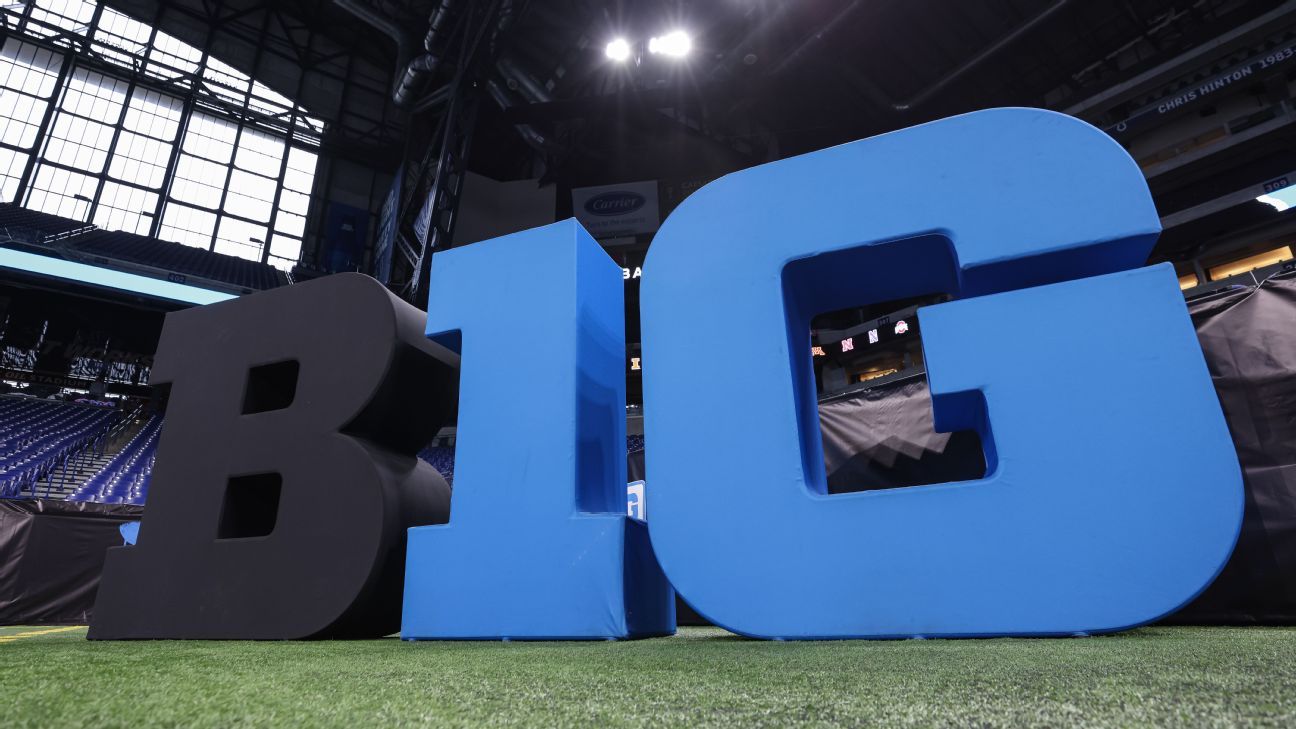Georgia Tech will ultimately be part of a 7 team swing from the ACC to the SEC (+Kansas). Possibly more. The real limit is 28 teams. Why? Inventory. You house one superconference under FOX. One under ESPN. How many slots does ESPN need filled in that world?
SECN: 3 (Noon, 3:30, 7:00) ... 6 teams
SECNA: 3 (Noon, 3:30, 7:00) ... 6 teams
ABC: Minimum 1 (3:30) ... 2 teams
ESPN: Minimum 1 ... 2 teams
ESPN2: Minimum 1 ... 2 teams
We're already consuming 18 teams a week: without any byes, without regard to Thursday/Friday night games, without regard to ESPNU carriage, without regard to ABC/ESPN/ESPN2 carrying more than 1 game on Saturday, without regard to having a later kick out of the plains (10:30), without regard to T3/OTA carriage. It's pretty easy if you're ESPN to consume all the games generated by 28 teams without coming close to saturating your slots. Same story for the B1G and FOX (FOX, FS1, FS2, BTN).
SEC Southwest: Kansas, Missouri, Arkansas, Oklahoma, Texas, TAMU, (TCU/Baylor/TTU/KST/Nebraska)
SEC Gulf Coast: LSU, Ole Miss, Miss State, Alabama, Auburn, Vanderbilt, Florida State
SEC Southeast: Miami, Florida, Clemson, South Carolina, Georgia, Georgia Tech, Tennessee
SEC Appalachian: Louisville, Kentucky, North Carolina, NC State, Duke, Virginia, Virginia Tech
I'll even leave the possibility open for 2-4 schools to be members in everything but football or have some similar scheduling arrangement (Wake Forest, Tulane, Rice, Vanderbilt, Duke, Notre Dame).
To reduce to 24: Remove Louisville, Miami, Duke, and the wildcard in the SEC SW, shift FSU back to the SEC Southeast.
Football: Everybody in your division, 2 permanent non-division rivals, 1 rotating. (9 games)
Basketball: Home and Home in your division, home and home against 2 permanent non-division rivals, 1 rotating home and home. (18 games)
Baseball: Series with your division, series with 2 permanent non-division rivals, 2 rotating series. (10 weekend series).
Makes pretty good logistical sense for everybody involved. Now let's show how it makes dollars and cents:
ESPN adds each pro-rata. If they are all phased in with partial shares at first, everybody makes more money for awhile at least.
ESPN gains monopoly status on college football advertising where it is viewed most and easily has the most 4m+ live viewer games, which is a big deal for ad rates.
ESPN can now demand much higher carriage fees from SECNA and SECN.
The SEC can continue to lean into further monetization beyond just football. March Madness can be blown up and turned into the College Football Playoff style format. It would overnight double the value of any basketball blue bloods acquired from the ACC, and the contract for non-equal revenue in the SEC's favor in that playoff writes itself as well. ESPN has been happy to lean into college baseball and now you're getting 5k+ crowds routinely at several SEC schools. This playbook works very well for the ACC schools shifted over to the SEC as well. It's still a struggle for baseball to be profitable (hello LSU), but it no longer hemorrhages red ink like it use to. I imagine a push would be made for full scholarships for the entire baseball roster instead of the bizarre world we inhabit now of full, half, quarter, and even less scholarships.
It makes the conference big enough (essentially SoCon 2.0) that we can go back to playing highly regional division focused play. This is a boom for the TV ratings AND the gate and all the ancillary revenue associated with fans actually on campus at the games.
The SEC secures all the most valuable recruiting turf in the nation other than Los Angeles.
If Notre Dame reaches a scheduling agreement with the SEC similar to the ACC, then ESPN leverages the Irish as an advertising back door directly into the heart of the B1G footprint.
No more broken rivalries. Well, maybe Kansas-KSU.
Greatly curtail the sad invention of the last 20 years: the conference matchup that only exists because of TV markets. No more South Carolina vs Missouri. No more Boston College vs Georgia Tech. Well, unless you're in the B1G. Then frequent flyer miles are still very important.

